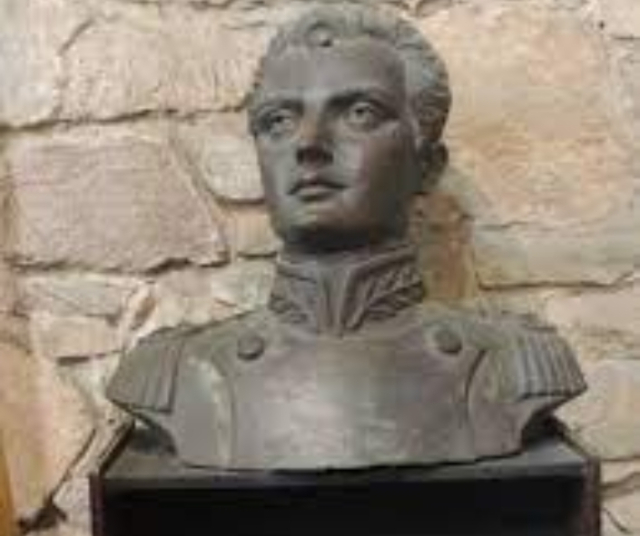Cuenca Independence Day is a date of great significance in the history of Ecuador. It marks the moment when the city of Cuenca proclaimed its independence from Spanish rule, becoming a milestone in the country's emancipation process. Join us to explore how this historical event occurred, who were its main protagonists, why it is celebrated in Ecuador and the importance this day has in national identity.
Historical background.
To properly understand Cuenca's Independence Day, it is essential to examine the historical background that led to this event. For centuries, Ecuador was part of the vast Spanish colonial empire in South America. However, at the end of the 18th century and beginning of the 19th century, independence movements began to emerge throughout the region.
Discontent with Spanish colonial rule grew among Ecuador's creole and mestizo population, fueled by economic exploitation, social discrimination, and trade restrictions imposed by Spain. The ideas of freedom and self-determination spreading from Europe and North America also influenced the rise of the independence movement in Ecuador.
The independence process.
The independence process of Cuenca was a complex and multifaceted event that developed over several years and was marked by a series of significant events. It began with the awakening of a fervent desire for freedom and self-determination among the inhabitants of Cuenca, who, like their compatriots in other regions of Ecuador and Latin America, longed to free themselves from the Spanish colonial yoke.
This independence process took place in the midst of a climate of political and social unrest, characterized by growing dissatisfaction with the Spanish government and the spread of enlightened and revolutionary ideas that advocated equality, justice and freedom. As these ideals gained strength, independence movements emerged throughout the region, and Cuenca was no exception.
Cuenca's independence process was marked by a series of key events, such as the formation of clandestine groups and secret societies that advocated emancipation, the organization of insurgent movements and armed resistance against Spanish royalist forces. There were military confrontations, diplomatic negotiations and acts of sabotage, all of them contributing in some way to the independence cause.
However, the independence process was not without challenges and difficulties. The people of Cuenca faced repression and violence by colonial authorities, as well as internal divisions and political rivalries that threatened to undermine the unity of the independence movement. Despite these obstacles, the people of Cuenca persevered in their fight for freedom and finally managed to achieve their goal of proclaiming their independence.
The proclamation of independence.
On November 3, 1820, the city of Cuenca proclaimed its independence from the Spanish government. This brave act was the result of the determination of local leaders and committed citizens who advocated for freedom and self-determination for their city. The proclamation of independence not only represented a direct challenge to Spanish rule, but also inspired similar movements in other parts of the country.
Main characters of Cuenca's independence day.
Abdon Calderon.

Abdón Calderón, a young officer of the Cuenca army, stood out as one of the most emblematic heroes of the independence process of Cuenca. At the Battle of Pichincha, which took place on May 24, 1822, Calderón demonstrated exceptional courage in facing Spanish royalist forces, despite being seriously wounded. His sacrifice and bravery became a symbol of the fight for freedom and independence in Ecuador.
José María Vargas.
José María Vargas was another prominent leader of the independence movement in Cuenca. As a member of the city council, Vargas played a crucial role in organizing and executing the proclamation of independence. His leadership and determination were essential to mobilize the population and consolidate support for the independence cause.
Juan José Flores.

Juan José Flores, known as the "Founder of the Republic of Ecuador", also had a prominent role in the independence process of Cuenca. As a military and political leader, Flores played a pivotal role in the fight against Spanish royalist forces and contributed to the creation of an independent republic in the region.
Celebration and meaning in Ecuador.
Cuenca Independence Day is celebrated every year on November 3 in Ecuador as a national holiday. This date commemorates the courage and determination of the Cuenca citizens who fought for the freedom and self-determination of their city. The celebration includes parades, civic ceremonies, cultural events and educational activities that highlight the legacy of independence heroes and promote patriotism and local pride.
Cuenca Independence Day is more than just a celebration; is a reminder of the importance of unity and solidarity in the fight for freedom and justice. It is an occasion to reflect on the history and legacy of the city and to renew commitment to the values of democracy, equality and justice that are fundamental to national identity.
Importance of Cuenca's Independence Day.
Cuenca Independence Day has significant importance in the history and culture of Ecuador. It marks the beginning of a period of transformation and liberation in the region, and symbolizes the struggle of the Ecuadorian people for independence and self-determination. Furthermore, the celebration of this day fosters a sense of national identity and promotes unity among Ecuadorians of all regions and ethnic origins.
Cuenca Independence Day is an occasion to honor the legacy of independence heroes, celebrate the values of freedom and justice, and renew commitment to building a more equitable and democratic society in Ecuador. It is a date that reminds us of the importance of history and collective memory in the formation of our national identity and invites us to reflect on the meaning of freedom and independence in our lives.
